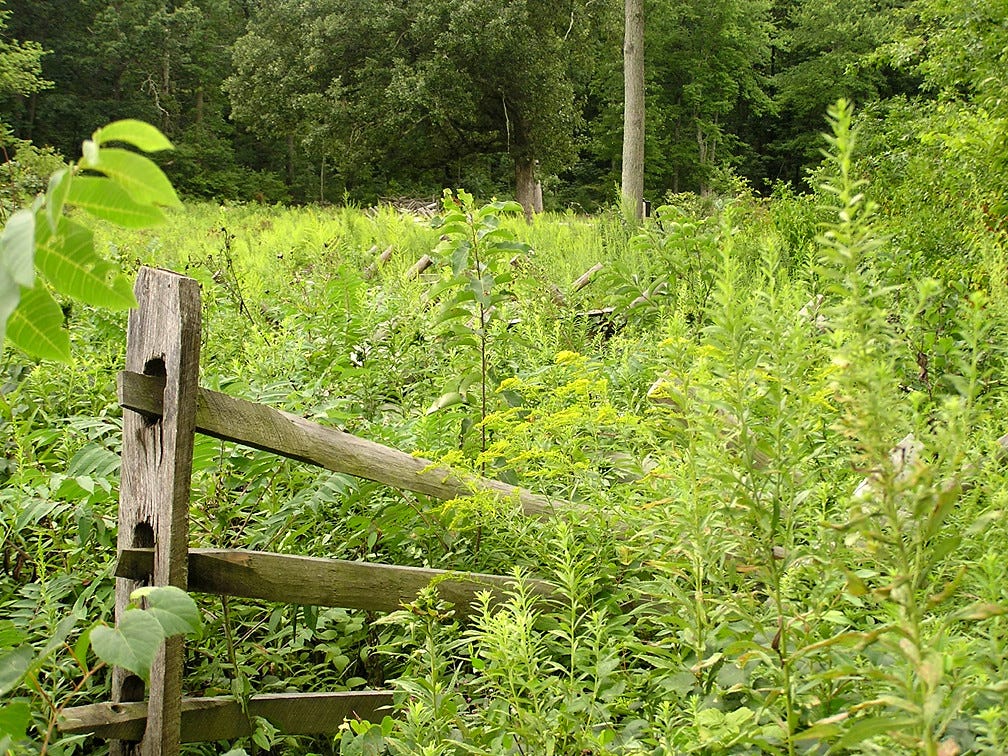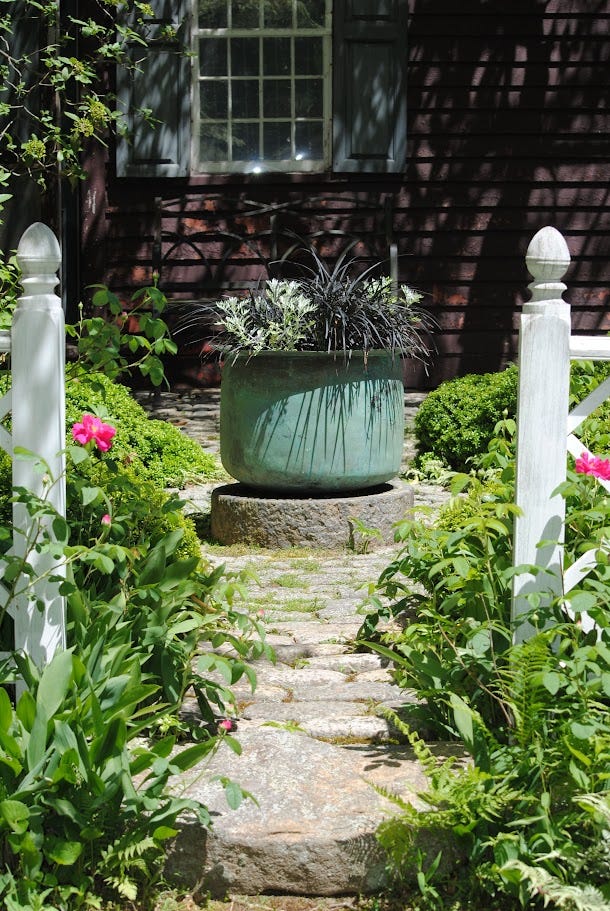One of the reasons people resist using native plants in their landscapes is a concern about “messiness.” Perhaps they’ve seen a neighbor’s let-it-all-hang-out garden and decided they want nothing to do with that kind of “weedy,” “overgrown” chaos. Well, if you’re in that camp, I’m here to tell you it’s not the native plants you should be blaming, it’s the design. Or lack thereof.
I could make the case we all just need to get over our outdated notions of what’s “attractive,” since, hear me out, it seems more important to save the planet than achieve peak curb appeal. We’ve been conditioned to think a “manicured” monoculture of nonnative turfgrass punctuated by a few “tidy” evergreen shrubs is the height of landscape aesthetics, not to mention civic duty. It so happens, though, that what our culture tells us is “attractive” is actually lethal to nature and, ultimately, ourselves. As Nancy Lawson argues, we need to challenge the binary language used to describe our outdoor surroundings, whereby lawns contaminated with herbicides, pesticides and synthetic fertilizers are deemed “immaculate,” while thriving wildlife sanctuaries are labeled “unruly.” Benjamin Vogt boils it down to this: we need to “rethink pretty.”
But we humans are tricky creatures, so it’s more complicated than just insisting we change our aesthetics. Some of our reactions to landscapes are unconscious.
According to University of Michigan scholars Rachel and Stephen Kaplan, we make immediate – and largely subliminal – assessments of our physical surroundings along four dimensions: coherence, complexity, legibility and mystery. A coherent scene is organized into clear units or patterns. A complex one is rich and intricate. A legible space is one we can easily navigate. Mystery occurs when our curiosity is piqued and we sense there’s more to learn by engaging with the setting. When the Kaplans studied human preferences along these dimensions, they concluded we feel most comfortable in spaces that offer at least a modicum of coherence and complexity, plus a maximum of legibility and mystery.
Here’s my laywoman’s interpretation: we like landscapes that are organized enough so we know what we’re looking at but diverse enough so it’s interesting; and that offer clear cues about how to wander through them while inviting us to explore further than we can immediately see. Note that the types of plants (e.g., native vs. non-native) are irrelevant to this framework.
When we say a landscape is “unruly” or “unkempt,” what we may actually mean is it’s incoherent and illegible. There’s too much going on, our eyes don’t know where to focus, and we’re discouraged from interacting with it. We may even feel confused or threatened.
Design is thus an important tool for helping people embrace landscapes of any kind, and especially those focused on native plants, given their unfair but persistent reputation as “messy.” A native garden with a variety of distinct components, an evident way to traverse it, and some hints of hidden pleasure will have broad appeal to humans while providing critical habitat to wildlife and other vital ecosystem services. A win-win-win!

A birds-eye view of the Piet Oudolf-designed meadow at the Delaware Botanic Gardens, above, illustrates the concepts of coherence, with species clumped into distinct swaths or swoops, as well as complexity, with dozens of different species represented. The clear blocks of color and texture help viewers differentiate among species and grasp the intentionality of the planting. A meadow in which a collection of seeds had simply been scattered might end up looking more like the image below, which is complex (and would provide wonderful wildlife habitat), but not coherent. It’s harder to “read.”

The container planting above provides another example of coherence. Focal points – which can be containers, fountains, sculptures, architectural plants, arbors, or furniture – tell our eyes where to rest in otherwise busy scenes.
The mown turfgrass path through lush beds of native shrubs and perennials above illustrates the concept of legibility. Despite the volume and density of the plantings, it’s very clear how to navigate through the space.
This path leading through a vine-covered arbor exemplifies the concept of mystery. Don’t you just want to duck through there to peek at what’s on the other side? Mystery appeals to our senses of exploration and discovery.
While these images are from public botanical gardens, the principles involved can be applied anywhere, including our own yards, and with any kind of plants. So before we dismiss native perennials, shrubs or trees as somehow inherently “unattractive,” let’s remember it’s the design, not the species, that drives our landscape preferences.
If you live in the DC vicinity and could use assistance with sustainable landscaping, visit Bees’ Knees Design. I’d be happy to help you.
Resources
Barnes, Jared, “Legibility in Landscapes: Making Naturalistic Plantings More Readable,” Meristem, January 25, 2025.
Kaplan, Rachel; Kaplan, Stephen, The Experience of Nature: a Psychological Perspective, Cambridge University Press, 1989.
Keissler, Liza, @viburnumgardens, January 2024.
Morrison, Darrel, Beauty of the Wild, Library of American Landscape History, 2021.







Thanks for this crystal clear explanation of the value of design! It really brings into focus the need for good design with native plants. Really appreciate this.
Perhaps my favorite line: it seems more important to save the planet than achieve peak curb appeal. Nice understatement!